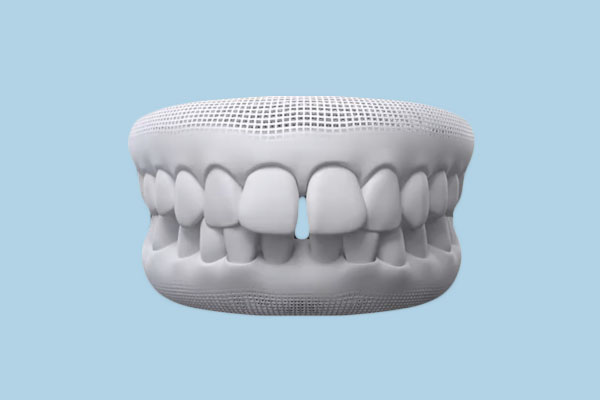Contents

Diastema: Everything You Need to Know About Gapped Teeth
A diastema, more commonly known as "gapped teeth," is a space between the upper central incisors that can be a source of self-consciousness for some, but also a true charm for others. While this dental gap generally poses no health problems, it can sometimes lead to speech issues or hygiene difficulties. Fortunately, there are now many orthodontic and cosmetic solutions to correct a diastema and achieve a harmonious smile. Discover everything you need to know about the causes, treatments, and common misconceptions surrounding gapped teeth.
What is a Diastema?
A diastema is defined as an abnormally wide space between two adjacent teeth, most often between the upper central incisors. This gap can also affect other teeth, or even the entire dentition (generalized diastema). From a purely medical standpoint, a diastema is not considered a pathology unless it is linked to an underlying periodontal disease. In most cases, it does not cause functional problems, although some patients may experience pronunciation difficulties.
From an aesthetic perspective, however, a diastema can be a concern for those affected and may require correction to regain self-confidence and a beautiful smile.
The Cultural View of Gapped Teeth
While the medical term "diastema" is not widely known, the term "gapped teeth" has entered common language. But where does this positive association with a dental gap come from? Several hypotheses exist:
- In some African and Asian cultures, a diastema is considered a sign of beauty, luck, and prosperity.
- During the Napoleonic wars, soldiers had to use their teeth to tear open powder packets for their rifles. Those with widely spaced incisors could not perform this task and were discharged, thus avoiding deadly combat.
Whatever the true origin, gapped teeth now have a rather positive image, conveyed by many celebrities who have made their diastema a true aesthetic signature (e.g., Madonna, Michael Strahan).
What are the main causes of a Diastema?
The factors contributing to the appearance of a diastema are multiple and often intertwined. They can be broadly divided into two main categories:
Dental and Occlusal Causes
- An oversized labial frenum (the tissue connecting the lip to the gum).
- A mismatch between jaw size and tooth size (e.g., small teeth in a large jaw).
- Missing or undersized teeth (baby teeth issues can be a sign).
Functional Causes
- Incorrect swallowing reflex (tongue thrust).
- Habits like thumb-sucking.
What are the solutions for closing a Diastema?
Depending on the cause, size, and location of the diastema, different therapeutic options can be considered:
Orthodontics
Orthodontic treatment is the gold standard for correcting a diastema related to tooth malposition. It involves wearing an appliance (braces or clear aligners) that exerts light, continuous forces on the teeth to gradually bring them together. The two main techniques are conventional braces and invisible aligners.
Surgery
If the diastema is caused by an abnormal labial frenum, a surgical procedure called a frenectomy may be necessary in conjunction with orthodontics. This quick and minimally painful procedure can be performed with a laser under local anesthesia.
Dental Veneers
For an immediate aesthetic result, placing veneers on the teeth adjacent to the diastema is an interesting option, especially when the teeth are small (microdontia). These thin shells are bonded to the visible surface of the teeth to create a perfect alignment. The procedure is quick, painless, and requires minimal tooth preparation.
In Summary
| Treatment | Indications | Advantages | Disadvantages |
|---|---|---|---|
| Orthodontics | Moderate to large diastemas | Durable correction | Long treatment time (several months) |
| Frenectomy | Abnormal labial frenum | Quick procedure, minimally painful | Often requires complementary orthodontics |
| Dental Veneers | Small diastemas without malposition | Immediate aesthetic result | Purely cosmetic solution, high cost |
Conclusion
Far from being an inevitability, a diastema can now be effectively corrected thanks to advances in orthodontics and cosmetic dentistry. Whether of dental, functional, or periodontal origin, this gap between the front teeth should no longer be a source of self-consciousness. However, it's important not to succumb to the pressure of a certain "mass orthodontics" that would erase all the unique features of our smiles. Because a diastema, far from being a flaw, can also be a charming personality trait.
FAQ
Does a diastema disappear with age?
In a child, a diastema between the primary incisors is common and completely normal. This physiological space usually closes naturally with the eruption of the permanent teeth. However, in some cases, the diastema may persist into adulthood and require orthodontic correction.
Can a diastema appear after orthodontic treatment?
It is possible to see a relapse of the diastema after orthodontic treatment, especially if the initial causes were not corrected. This is why a precise diagnosis and comprehensive management, including a frenectomy if necessary, are important.
